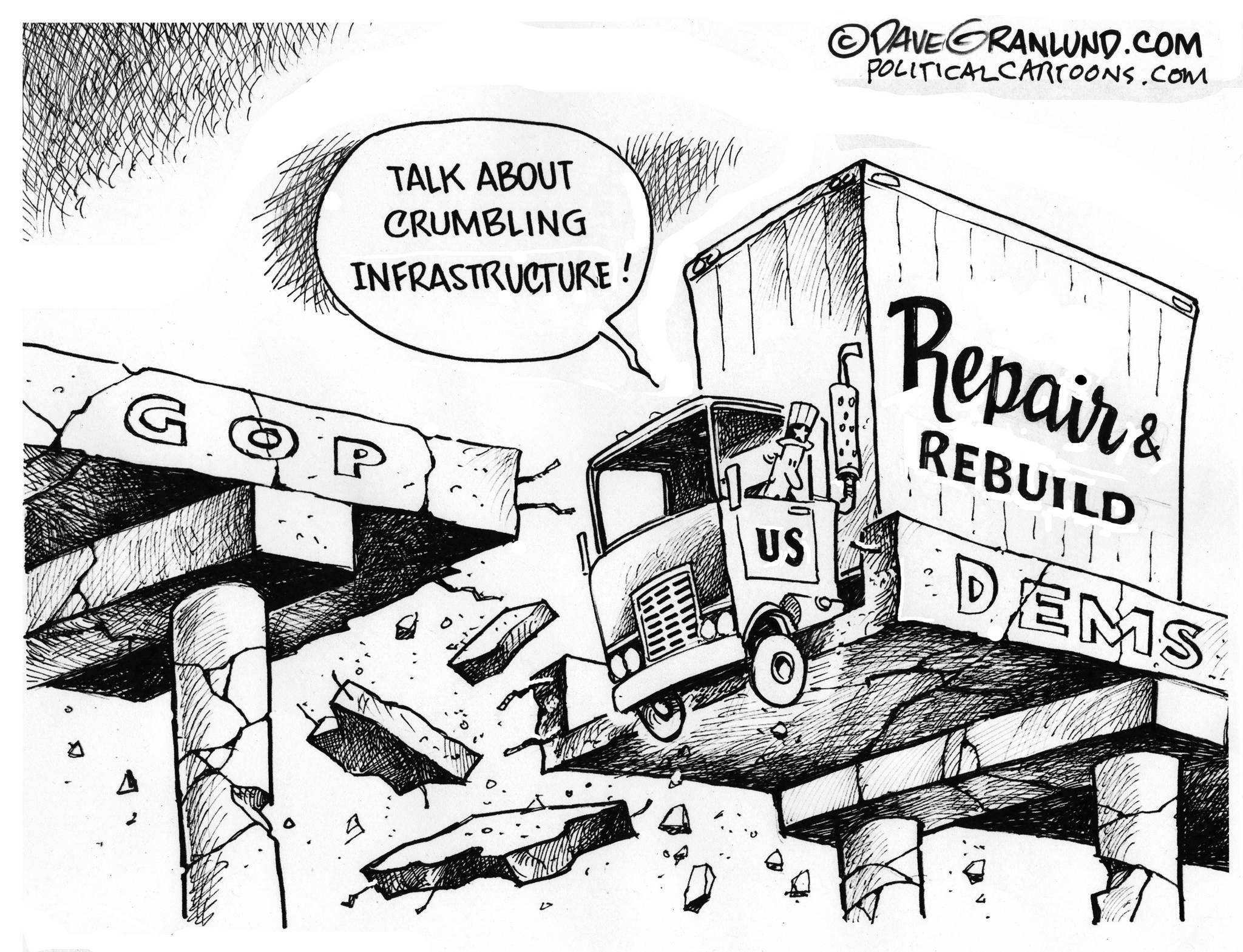By Peter Jensen
The Baltimore Sun
Unless you work in the construction trades or civil engineering or perhaps in local government, you probably don’t give much thought to how clean water got to your kitchen faucet, what happens after you flush or the design of that nearby highway overpass under construction. Public infrastructure has been likened to homeownership, and it’s a fitting comparison.
Your home not only had to be built, it has to be maintained for as long as you want it to be livable. Ignore a small crack in the foundation or tiny leak in the roof, and pretty soon, you have major structural damage. It’s the same way with pipes and wires and roads and bridges and schools and public buildings, rail lines and buses and on and on. We often take these things for granted. But we do so at our peril.
One of the small joys in a reporter’s life is getting the behind-the-scenes look at such things. I have walked around advanced wastewater treatment plants to witness several types of helpful microorganisms in action, gotten tours of recycling sorting lines, walked through Boston’s $24.3 billion “Big Dig” when the Ted Williams Tunnel was under construction with steel from Baltimore’s Sparrows Point. I have stood with highway construction crews as they spread, smoothed and compressed macadam from late at night until the early morning hours. And I toured Baltimore’s subway extension when excavators were dealing with potentially dangerous pockets of gasoline in the groundwater, the legacy of leaky underground storage tanks.
It’s unfortunate that President Joe Biden’s $2 trillion infrastructure investment plan has been reduced to the usual Washington sound bites with job creation on the one hand (which is what happens when you title a bill “The American Jobs Plan”) and tax hikes on the other. Not to mention there continues to be a peculiar criticism from Republicans about what constitutes infrastructure as if only roads and bridges fit that bill. In reality, infrastructure represents the basic structural and organizational assets you need to operate a society. People need to be able to get to places (without causing a larger and more destructive carbon footprint), to have water and sewer, schools and so forth. Not everyone needs affordable housing or high-speed broadband, perhaps, but the broader community certainly does if the U.S. wants to promote equal opportunity and to compete within the global economy.
Here’s what is often missing from the debate — an acknowledgment that the United States is investing too little in public infrastructure and has been for many years. The U.S. ranks 13th in the world in overall infrastructure spending, according to a 2109 World Economic Forum review. The American Society of Civil Engineers rates it a C-minus, with especially bad grades for public parks, roads, schools, transit and wastewater. Critics may get hot and bothered by the thought of spending $2 trillion over eight years, but it’s on point with a $20 trillion annual economy. In recent years, U.S. infrastructure investment has been around 2.3% of gross domestic product. In the booming economy of the 1950s, it was around 3%. There is, for lack of a better term, an infrastructure deficit every bit as real as the U.S. budget deficit, which hit the $3 trillion mark in the last budget year.
What happens if that investment is not made? Nothing changes immediately. Everything just gets worse, some things gradually, others suddenly. Just like that leaking foundation, it’s the combination of time and neglect that ultimately proves disastrous. The U.S. will continue to lose ground and other economies, including China, gain advantage. If we are not preparing for a future of electric cars, wind turbines and solar panels and taking steps to ameliorate climate change, if we fail to protect ourselves and our natural resources from harmful pollutants, if we do not address basic inequities within our society, we will bequeath to the next generation a major repair bill — or perhaps a substantially reduced quality of life.
It’s fair to debate how best to pay for it as well as the specifics of what is spent where. But the way things are headed it appears this is a conversation strictly within the Democratic Party with 50 senators — and especially West Virginia’s Joe “Swing Vote” Manchin — choosing the way forward through the budget reconciliation process while the other party would have Americans believe you never need pay for anything. Americans used to take pride in the societal foundations they built from the magnificence of the Hoover Dam to the glory of the Brooklyn Bridge. We ought to recapture that spirit by taking pride in the less scenic but just as important wonders of quality home care and reliable public transit.
Peter Jensen is an editorial writer at The Baltimore Sun; he can be reached at pejensen@baltsun.com.


